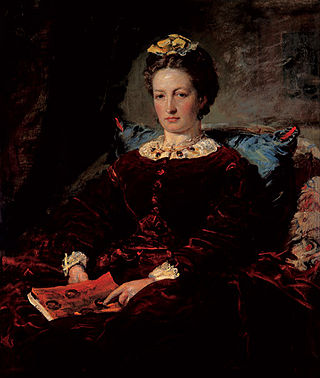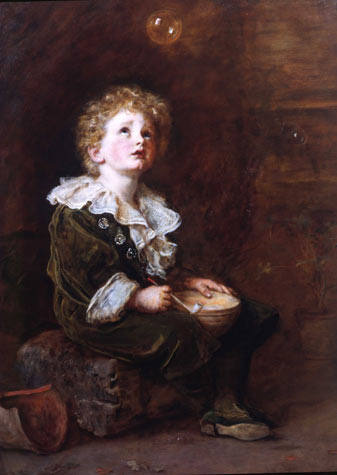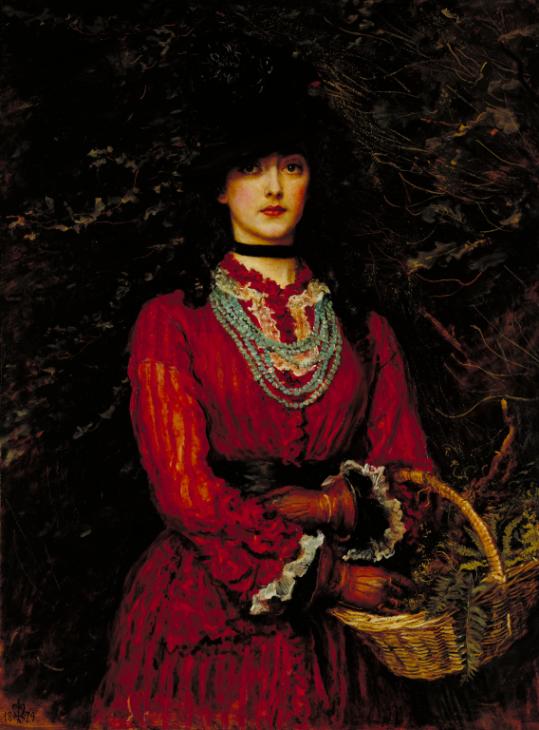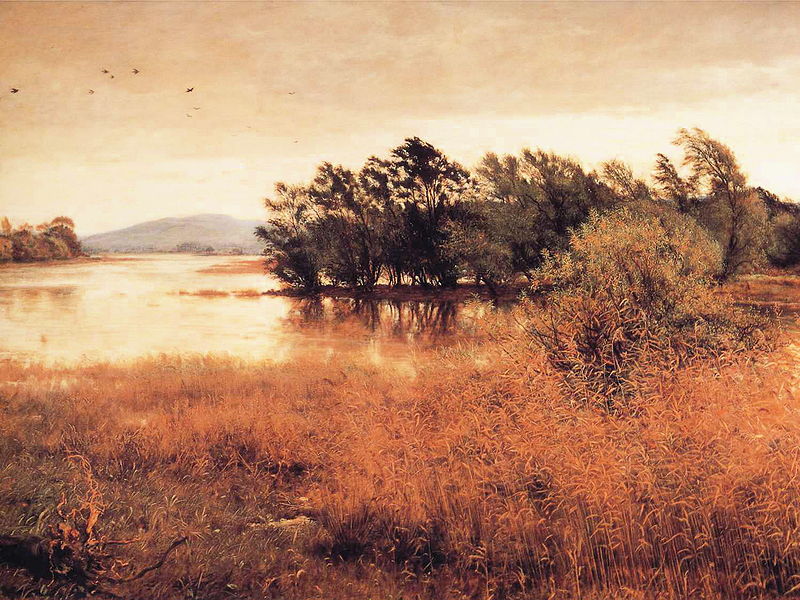An Appreciation: John Everett Millais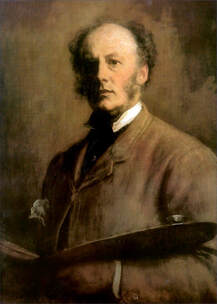 John Everett Millais self-portrait John Everett Millais self-portrait
John Everett Millais was a founding member of the Pre-Raphaelite Brotherhood and went on to become a prominent British artist in the second half of the 19th century.
Millais was born in Southampton, England on June 8, 1829. However, his family was from Jersey, one of the Channel Islands, and he spent his early years there. His father John William Millais was an amateur artist who passed on his love of art to his children. His mother Emily Mary Evermy took charge of schooling her children and encouraged their interest in art and music. It was soon recognized that John was an artistic prodigy and his mother undertook to advance his career as an artist. Indeed, the entire family moved to London in order to do so. When Emily Mary took her pre-adolescent son to the Royal Academy of Arts in hope of enrolling him in the Academy's schools, she was met with skepticism. However, when the President of the Academy saw the boy's drawings, he granted the nine-year old conditional acceptance. If he studied art for two years, he would be admitted to the Academy's schools. Accordingly, after two years at Sass' Drawing Academy, John was admitted to the Royal Academy Schools. At age 11, he was the youngest student ever at the Academy. Even though the other students were older, Millais got along well with them. Eventually, he became good friends with two other students: Dante Gabriel Rossetti and William Holman Hunt. The three were dissatisfied with what they regarded as the mechanical teaching of art and with the style of art popular with the art establishment. They longed for a time when art was more authentic and truthful. In 1848, Millais, Rossetti and Hunt joined with a few other artists to form the Pre-Raphaelite Brotherhood. They advocated a return to art prior to the art of the High Renaissance. Consistent with this aim, they drew their subjects from romanticized visions of the Medieval past, Shakespeare and and the Bible. Their detailed works incorporated brighter colors than the establishment art. While Rossetti acted as the leader of the group, Millais produced some of the best known Pre-Raphaelite works such as “Ophelia” and “Christ in the House of His Parents.” The romantic idealization of Medieval times was quite popular in Victorian Britain as can be seen in the architecture and literature of the time. Thus, the market was predisposed towards the Pre-Raphaelites. In addition, the leading art critic of the day, John Ruskin, championed the work of the Pre-Raphaelites, especially that of Millais. As a result, the Brotherhood was a success. Because of his professional association with Ruskin, Millais met Ruskin's wife, Euphemia "Effie" Chalmers Gray. Over time, Millais realized that he was in love with Effie and so the stage was set for one of those tragic unrequited love stories so popular with the Victorians. However, Millais soon discovered that not only were his feelings were reciprocated but there was something deeply wrong with the Ruskins' marriage. Whereas it had started with Ruskin writing poetry to Effie, he had become cruel to her and distrustful. Furthermore, even though they had been married for several years, Effie was still a virgin because Ruskin did not want to father any children. All of this led to an annulment of the marriage in 1854. Millais and Effie were married in 1855. They would have eight children together. By this time, the three core members of the Pre-Raphaelite Brotherhood had drifted apart, pursuing other directions in their art. Millais' style changed around this time becoming looser and less detailed. From painting pictures of his children, he developed a specialty in children's portraits, which were quite popular. To support his growing family, Millais did illustrations for books including a collection of poems by Alfred, Lord Tennyson. He also allowed his paintings to be used in advertisements for products - - most notoriously, his painting “Bubbles” was used to advertise Pears' Soap. This led William Morris, a one-time admirer of the Pre-Raphaelites, to accuse Millais of having sold out. But Millais had his admirers. James Abbott McNeill Whistler, perhaps the most famous artists in London at the time, was a supporter. John Singer Sargent was also reportedly influenced by Millais. In the closing decades of his career, Millais became a popular portrait painter. His sitters included two prime ministers: Benjamin Disraeli and William Gladstone. The latter arranged for Millais to receive the title of baronet from Queen Victoria. Millais was the first artist to receive such an honor. At the same time, Millais also became interested in landscapes. In particular, he was inspired by scenes of Scotland. Millais rose to the top of the British art establishment in 1896 when he was appointed President of the Royal Academy. However, he died a few months later. |
Two of Millais best-known Pre-Raphaelite works: "Ophelia" (above) is derived from Shakespeare's "Hamlet." The model was Elizabeth Siddal who later married Millais' Pre-Raphaelit colleague Dante Gabriel Rossetti. Siddal had to pose in a bath tub full of water during the winter. "Christ in the House of his Parents" (below) was criticized at the time for depicting the Holy Family as working class.
Above: Millais' wife Effie Gray.
Below: Well-known for his pictures of children, Millais was criticized for allowing his painting "Bubbles" to be used in an advertisement for soap. Millais' later career focused on portraits (e.g. "Miss Eveleen Tennant" (above)) and landscapes (e.g., "Chill October" (below)).
|
Artist appreciation - Sir John Everett Millais


